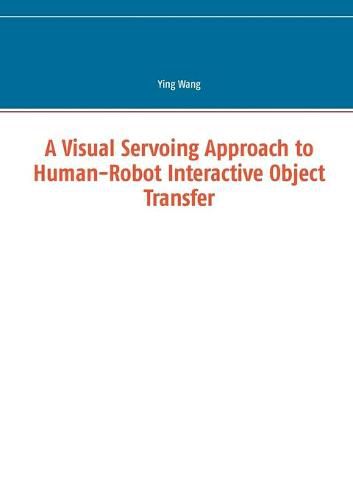Readings Newsletter
Become a Readings Member to make your shopping experience even easier.
Sign in or sign up for free!
You’re not far away from qualifying for FREE standard shipping within Australia
You’ve qualified for FREE standard shipping within Australia
The cart is loading…






This title is printed to order. This book may have been self-published. If so, we cannot guarantee the quality of the content. In the main most books will have gone through the editing process however some may not. We therefore suggest that you be aware of this before ordering this book. If in doubt check either the author or publisher’s details as we are unable to accept any returns unless they are faulty. Please contact us if you have any questions.
Taking human factors into account, a visual servoing approach aims to facilitate robots with real-time situational information to accomplish tasks in direct and proximate collaboration with people. A hybrid visual servoing algorithm, a combination of the classical position-based and image-based visual servoing, is applied to the whole task space. A model-based tracker monitors the human activities, via matching the human skeleton representation and the image of people in image. Grasping algorithms are implemented to compute grasp points based on the geometrical model of the robot gripper. Whilst major challenges of human-robot interactive object transfer are visual occlusions and making grasping plans, this work proposes a new method of visually guiding a robot with the presence of partial visual occlusion, and elaborate the solution to adaptive robotic grasping.
$9.00 standard shipping within Australia
FREE standard shipping within Australia for orders over $100.00
Express & International shipping calculated at checkout
This title is printed to order. This book may have been self-published. If so, we cannot guarantee the quality of the content. In the main most books will have gone through the editing process however some may not. We therefore suggest that you be aware of this before ordering this book. If in doubt check either the author or publisher’s details as we are unable to accept any returns unless they are faulty. Please contact us if you have any questions.
Taking human factors into account, a visual servoing approach aims to facilitate robots with real-time situational information to accomplish tasks in direct and proximate collaboration with people. A hybrid visual servoing algorithm, a combination of the classical position-based and image-based visual servoing, is applied to the whole task space. A model-based tracker monitors the human activities, via matching the human skeleton representation and the image of people in image. Grasping algorithms are implemented to compute grasp points based on the geometrical model of the robot gripper. Whilst major challenges of human-robot interactive object transfer are visual occlusions and making grasping plans, this work proposes a new method of visually guiding a robot with the presence of partial visual occlusion, and elaborate the solution to adaptive robotic grasping.